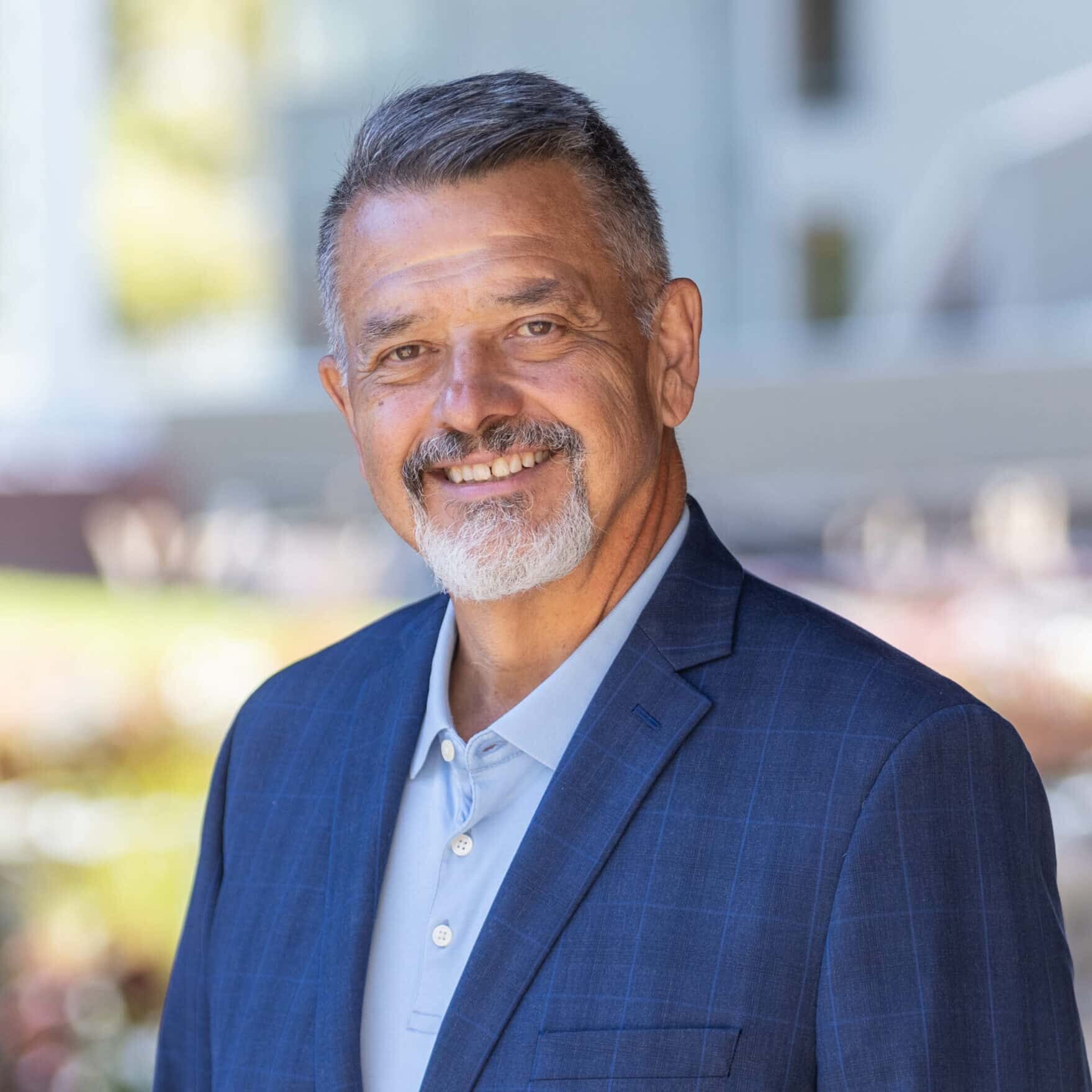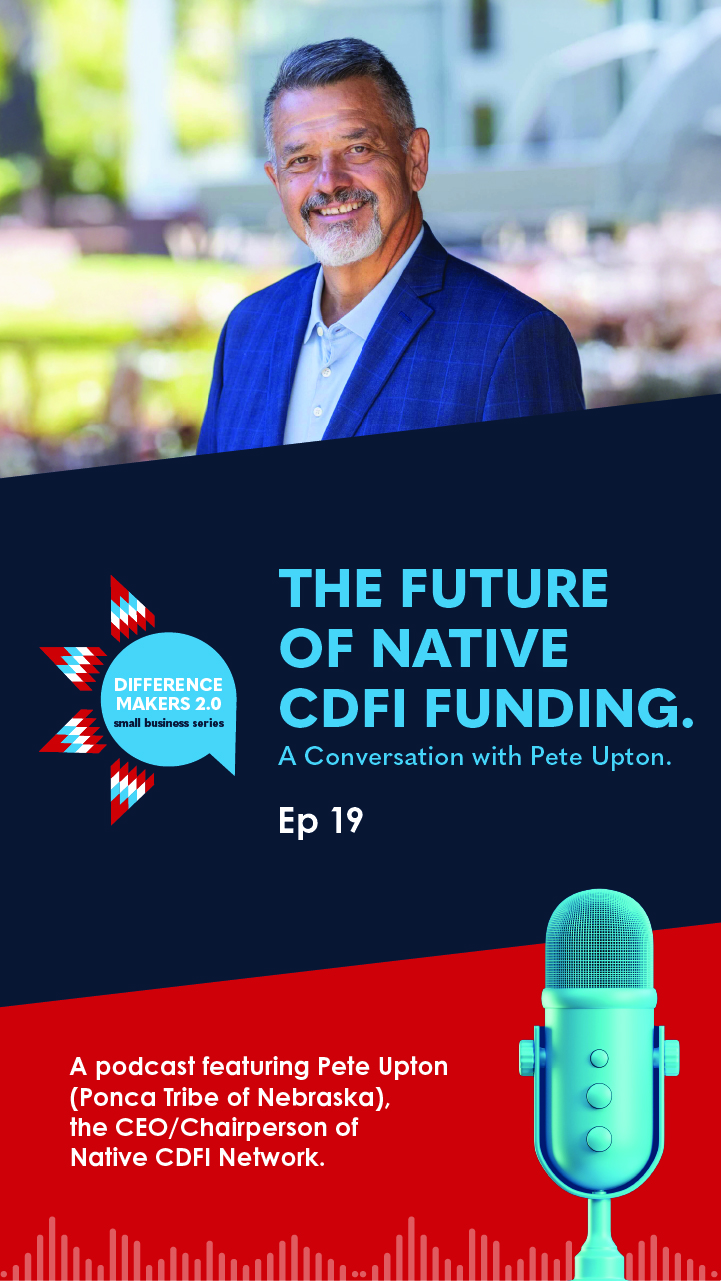
- Details
- By Native StoryLab
- Sponsored Content
For more than 20 years, Native CDFIs have nurtured economic growth in Native American communities that would otherwise be banking deserts. Today, the only federal fund dedicated to financing Native CDFIs is on the line, threatening to roll back financial sovereignty in tribal communities and pull critical capital for small businesses, housing and more. In a recent op-ed for Tribal Business News, Native CDFI Network CEO Pete Upton called the move an “existential threat.”
As we approach the finale of the Difference Makers 2.0 series, Upton spoke with host Elyse Wild about what that means, why NCN is calling for a $50 million set aside, and the inevitable future of clean energy in Indian Country.
Can you break down what the Native American CDFI Assistance (NACA) fund is and why losing it would be such a big deal?
The NACA program was created in 2002 as seed capital for Native CDFIs. Losing NACA would be a huge gut punch to Indian Country. Many of our Native CDFIs have asset bases under $20 million and rely heavily on this seed capital, which has been underfunded for 10-15 years.
It's the only program specifically within the Treasury that provides funding for Native CDFIs, and it has a massive multiplier effect. According to former Treasury Secretary Janet Yellen, federal CDFI funding is leveraged eight to one. NACA fills gaps where banks aren't working—46% of all Native lands are in banking deserts, which is 12 times the national average.
We're looking at 86% of this year's funding getting clawed back, and next year it could be gone entirely. What does this mean for communities on the ground?
NACA is the lifeline for financial sovereignty in Native communities. Without it, there will be fewer business loans, stalled tribal economies, and Native CDFIs struggling to compete with larger institutions that have hundreds of millions in assets.
Native entrepreneurs won't be able to start or expand businesses like construction companies, gas stations, or grocery stores. The housing shortage will worsen without down payment assistance and home improvement loans. Some Native CDFIs may have to close their doors, leaving entire regions without their only lender.
The administration is proposing a $100 million rural funding pool as an alternative. You called it "erasure rather than reform." Why wouldn't this work?
My main concern is they need to level the playing field. If we're competing with CDFIs that have larger balance sheets, Native CDFIs would likely be left out. We agree with the administration that this money is intended for seed capital—no group needs seed capital more than Native CDFIs.
Our proposal is either to increase that $100 million to $150 million with a $50 million set-aside for Native CDFIs, or establish a minimum within that $100 million specifically for Native CDFIs.
Your team seems convinced that clean energy development in Indian Country is inevitable. That's a bold statement. Why so confident?
I want to restate that as energy resilience and alternatives. Life is a marathon—four years seems long but is really short. This investment in Indian Country for energy alternatives will come eventually.
We see communities without running water or electricity—in the United States of America. We're talking about basic infrastructure. Whether it's in the next 4, 8, or 12 years, this funding will inevitably come to provide what's missing in Indian Country. We're in this for the long haul, not as a passing fad.
You've mentioned needing more flexible capital. What does that look like?
We need capital that meets Native communities' needs—not rigid dollars with strings attached or unrealistic timelines. We need patient capital that doesn't expect repayment within 12 months, with multi-year timelines for businesses and infrastructure to mature.
We need place-based, culturally rooted funding designed with Indian Country in mind, acknowledging geographic remoteness, legal complexities, and sovereign status. Philanthropy and private investors need to step up with the right kind of capital.
Organizations like Northwest Area Foundation, MacArthur Foundation, and institutions like Wells Fargo and BMO have built deeper partnerships beyond standard CRA compliance. MacKenzie Scott's $115 million investment in Native CDFIs last fall was exactly the jolt our communities needed.
You've called for a $50 million annual set-aside for Native CDFIs. How did you arrive at that number?
In 2023, Native CDFIs collectively requested over $85 million in federal funding. The $50 million would provide significant capital growth and leverage up to $400 million at an eight-to-one ratio.
This would support Native-specific lending models that work on tribal lands with trust land collateral and tribal jurisdictions. When Native CDFIs compete in general competitions, they're scored against multi-million dollar institutions with decades of operational history. We need a level playing field.
The $50 million isn't a handout—it's a down payment on investing in tribal economies, recognizing that Native CDFIs serve the hardest-hit communities with discipline, accountability, and impact.
Tribes got over $500 million from the SSBCI program. Is there an opportunity for them to deploy some capital to Native CDFIs?
Absolutely. Native CDFIs are already in small business lending with experience in originating, underwriting, and servicing loans for Native entrepreneurs. We understand the barriers Native-owned businesses face and have the speed, capacity, compliance track record, and local trust that makes us perfect partners for deploying these funds.
If you could design the ideal funding ecosystem for Native CDFIs from scratch, what would it look like?
A permanent Native-led federal set-aside within Treasury—mandatory, non-discretionary, not subject to appropriations fights or political winds. Start at $50 million annually, scaled as the ecosystem grows, with flexible, patient capital.
I'd love a seat at the table with Treasury Secretary Bessent and the Trump administration to educate them on federal trust responsibility and how CDFIs provide what they're looking for. Native CDFIs are about economic freedom, not dependency—building businesses, creating jobs, keeping government out of the way where possible.
The system should be rooted in sovereignty, sustained by long-term capital, and free from political volatility. Cut the red tape, invest in small emerging Native CDFIs, and let Native CDFIs lead.
Difference Makers 2.0 is a yearlong series that highlights how Native community development financial institutions (CDFIs) work alongside their small business clients to accelerate change and create economic opportunities in Native communities. Join the Native CDFI Network and Tribal Business News as they shine a spotlight on the people accelerating economic change in Indian Country. Read the stories here and be sure to tune into the Difference Makers 2.0 podcast.
